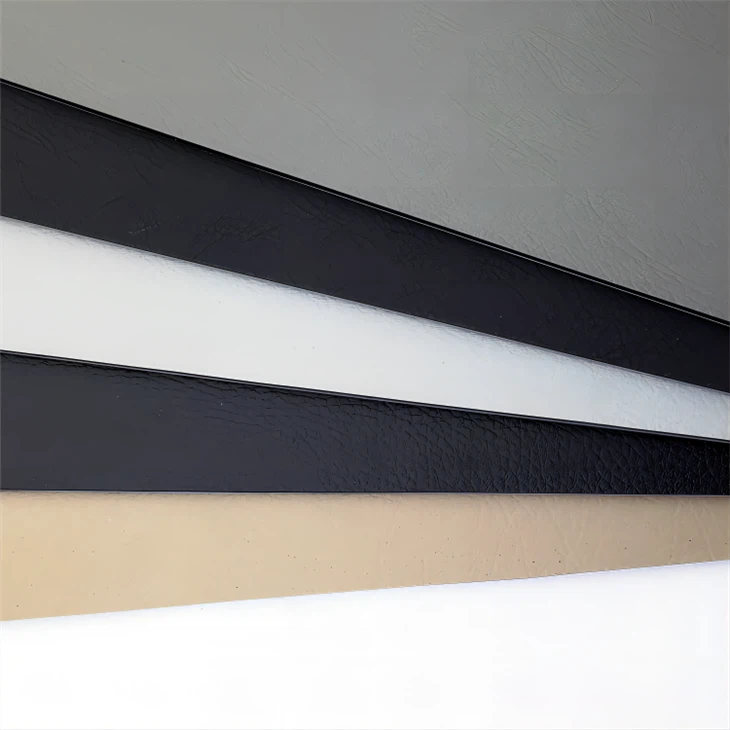Hey there! As a supplier of PVC and polycarbonate materials, I often get asked about how to improve the flexibility of polycarbonate to make it more like PVC. So, I thought I'd share some insights on this topic.
First off, let's understand the basic differences between PVC and polycarbonate. PVC, or polyvinyl chloride, is known for its flexibility. It can be easily bent and shaped, which makes it suitable for a wide range of applications like pipes, flooring, and even clothing. On the other hand, polycarbonate is a strong, rigid plastic. It's well - known for its excellent impact resistance and transparency, but it's not as flexible as PVC out of the box.
1. Plasticizers
One of the most common ways to improve the flexibility of polycarbonate is by using plasticizers. Plasticizers are substances that are added to a polymer to increase its flexibility, workability, or distensibility. When it comes to polycarbonate, choosing the right plasticizer is crucial.
There are different types of plasticizers available in the market. For example, phthalate - based plasticizers have been widely used in the past. However, due to some environmental and health concerns, non - phthalate plasticizers are becoming more popular. When you add a plasticizer to polycarbonate, it essentially lubricates the polymer chains, allowing them to slide past each other more easily. This results in an increase in flexibility.
But here's the catch. Adding too much plasticizer can have negative effects on other properties of polycarbonate. For instance, it might reduce the impact resistance or the heat resistance of the material. So, it's all about finding the right balance. You can start by adding a small amount of plasticizer and then gradually increasing it while testing the material's properties at each step.
2. Blending with Flexible Polymers
Another approach is to blend polycarbonate with more flexible polymers. One option is to blend it with PVC itself. When you blend polycarbonate and PVC, you can get a material that combines the best of both worlds. The polycarbonate provides the strength and impact resistance, while the PVC adds flexibility.
The blending process needs to be carefully controlled. You need to ensure that the two polymers are well - mixed. This can be done using a twin - screw extruder, which is a common piece of equipment in the plastics industry. The extruder heats and melts the polymers and then mixes them together under high pressure.
However, blending also has its challenges. The compatibility between polycarbonate and PVC is not always perfect. There might be issues with phase separation, where the two polymers don't mix uniformly and form separate phases. To overcome this, you can use compatibilizers. Compatibilizers are special additives that help improve the adhesion between the two polymers, ensuring a more homogeneous blend.
3. Modifying the Molecular Structure
You can also try to modify the molecular structure of polycarbonate to make it more flexible. One way is through copolymerization. Copolymerization involves combining two or more different monomers to form a copolymer.
For example, you can copolymerize bisphenol A, which is a common monomer in polycarbonate, with other monomers that have more flexible molecular structures. This can introduce some flexibility into the polycarbonate chain. The resulting copolymer will have different properties compared to pure polycarbonate.
The advantage of this method is that the flexibility improvement is more intrinsic to the material. Once the copolymer is formed, the flexibility is built - in, and you don't have to worry about issues like plasticizer migration, which can occur with plasticized polycarbonate. However, copolymerization is a more complex process that requires specialized knowledge and equipment.
4. Processing Conditions
Believe it or not, the processing conditions can also have an impact on the flexibility of polycarbonate. For example, the temperature during the molding process is crucial. If you mold polycarbonate at a higher temperature, the polymer chains have more energy and can move more freely. This can result in a more flexible final product.
The cooling rate also matters. A slower cooling rate allows the polymer chains more time to arrange themselves in a more relaxed state, which can increase flexibility. On the other hand, a very fast cooling rate can lock the polymer chains in a more rigid configuration.


When you're processing polycarbonate, you can experiment with different temperatures and cooling rates to find the optimal conditions for achieving the desired flexibility.
Applications of More Flexible Polycarbonate
Once you've managed to improve the flexibility of polycarbonate, there are many potential applications. For example, in the automotive industry, flexible polycarbonate could be used for interior trim parts. It can be bent and shaped to fit different designs, while still maintaining the strength and durability that polycarbonate is known for.
In the electronics industry, flexible polycarbonate could be used for cable insulation. It can provide good electrical insulation properties along with the flexibility needed to bend and route the cables easily.
If you're interested in using more flexible polycarbonate for your projects, we at [Supplier's role] offer a wide range of PVC and polycarbonate products. You can check out our Pvc Hard Board, Plain Pvc Sheet, and Pvc Plastics on our website.
We're always happy to help you find the right solution for your specific needs. Whether you need advice on improving the flexibility of polycarbonate or you're looking to purchase our products, don't hesitate to reach out. We can have a detailed discussion about your requirements and work together to come up with the best approach.
References
- "Plastics Additives Handbook" by Hans Zweifel. This book provides in - depth information about plasticizers and other additives used in the plastics industry.
- "Polymer Blends and Alloys" by Anil K. Bhowmick and H. L. Stephens. It covers the theory and practice of blending different polymers, including polycarbonate.
- Research papers on polycarbonate modification from scientific journals such as "Journal of Polymer Science" and "Polymer Engineering and Science". These papers often present the latest research findings on modifying the molecular structure of polycarbonate.
